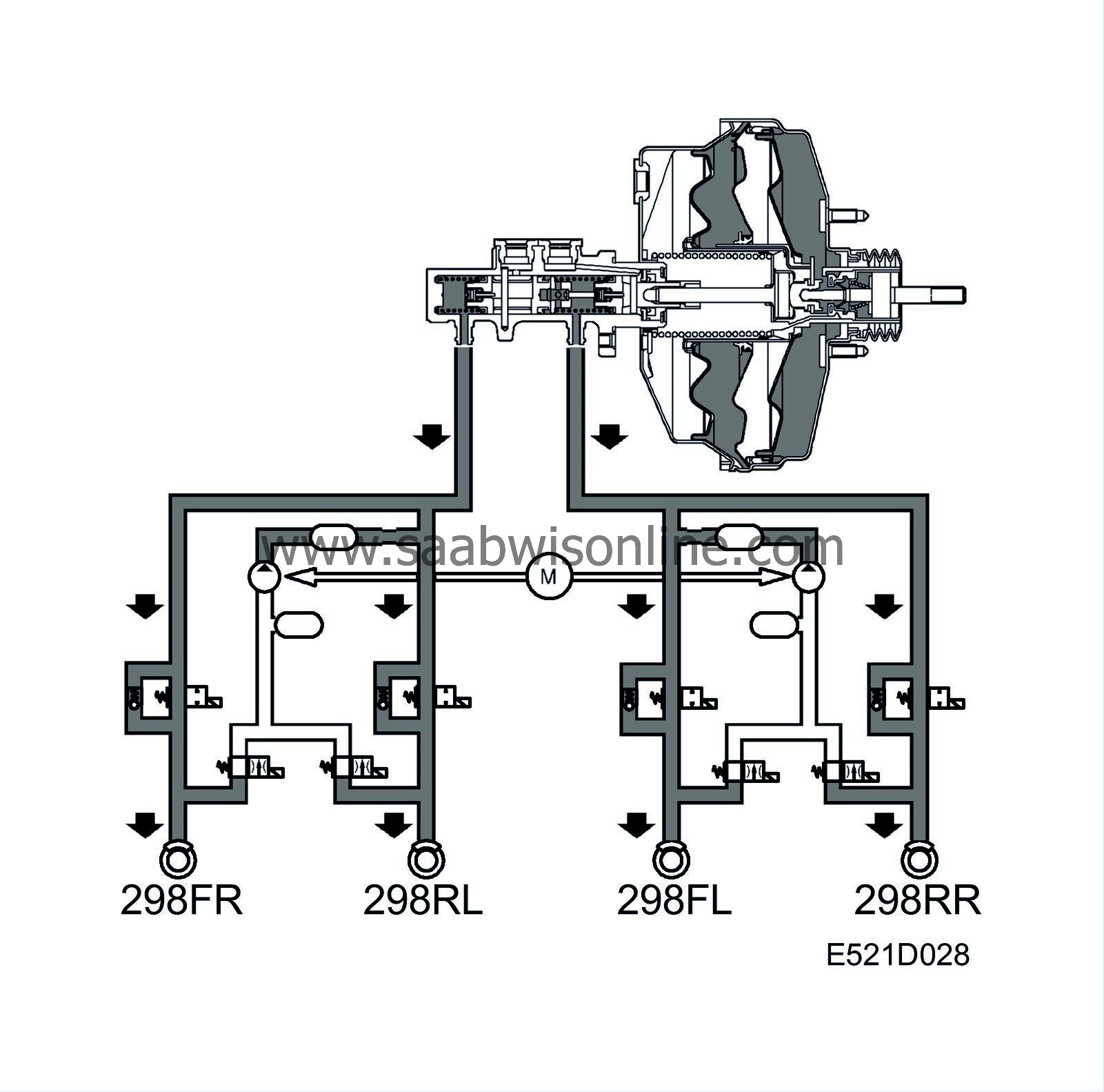Braking without ABS modulation
| Braking without ABS modulation |
The central valve for the primary plunger closes the return passage to the brake-fluid reservoir, and the pressure increases ahead of the plunger. The same pressure also acts on the secondary plunger, pressing it forwards and closing the its central valve.
In the hydraulic unit, the inlet valve is open and the outlet valve closed.
The hydraulic pressure in both brake circuits rises and, since the plungers have the same diameter, the pressure will be the same in both circuits in the valve block.
The pressure is transmitted through the brake system and acts on each of the wheel cylinders, whose plungers press the pads against the brake discs. When the pedal is released, the plungers in the master cylinder are returned to the rest position and the central valves in the primary and secondary circuits are opened. The pressure is released and the plunger in each wheel cylinder is returned to its rest position by the seal.



